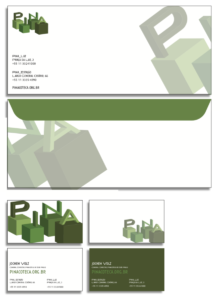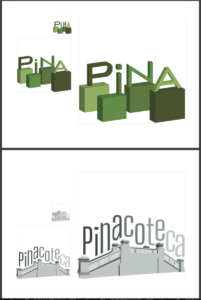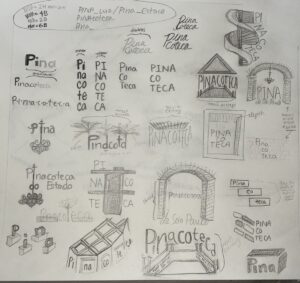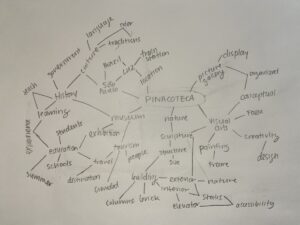https://drive.google.com/file/d/1nPwd-s1ChJW-5zyfATEnDSAQwNTegrsR/view?usp=sharing
Author: Anna C.
https://drive.google.com/drive/folders/1mDoZjnwdqEC5q6Yy50J5uKBR4PKuj2JY?usp=sharing
https://drive.google.com/drive/folders/1GrQsvs40j4GYgJBMnNjqVZZ7lJc_4lMU?usp=sharing
Or share screen.
I will need to screen share.
I have to screen share screen unless the google link works below.
It won’t allow me to upload a PDF or a JPG or a screen shot.
https://docs.google.com/document/d/1Hk9APY5P2TOzqg3AJ142PmvTupM5mNErZ4Vf5EDgdow/edit
After reading and watching the Lessons from IBM and Paul Rand I concluded there is no one way to design. Rand took his profession very seriously. His designs were straight forward but there was an element of play. He went into design as solving an issue using simple forms and different weights.
At first it threw me off that he took 10 years to create the IBM Logo, (because it takes Scher one second and 37 years of experience) but I thought it impressive that when he presented his work it was complete in booklet form. It showed how the logo would be used and why it worked. He made sure the applications matched the aesthetic. It was mentioned in the video that if you made a mistake it was the company’s problem not Rands. If you wanted Rand to change or edit his work you had to present a rationale of why it did not work v.s. Simply saying blue isn’t the color they wanted.
Also I did not know that Rand designed the logos for UPS and ABC.
In comparison, Paula Scher does three variations and felt if she did not grasp the concept then she would say she wasn’t a good fit for the project. Scher is so established her team helps put the completed applications together and Rand does it all himself.
They both are similar in the way they use play. Years later, Rand remained on the IBM branding team the same way Scher did with the Highline and Public Theater. They both stand by their designs and agree that the logo should take on meaning. Without meaning the company and logo become second rate.
Paula Scher said “The way stuff gets made is accidental and circumstantial, that things have a life of their own”. At first I thought, accidental? I did not understand what she meant, but through watching the Do What You’ve Never Done Before video I believe she meant that you often start with an idea that may not go anywhere but it doesn’t hurt to just do.
Scher took on the Highline job because she wanted Watch World. I found it interesting how she was never fully confident the job she did would become a real thing. I guess I thought the smaller things to get the attention of the audience like her city wide campaigns and her post card and stationary making would be like mini accomplishments regardless of it becoming a real thing. But overall she did the project not knowing it would be so successful. Just like how the I heart NY logo was originally intended for the state, but the logo became specific to the city.
I find myself overthinking more times than I can count. Wanting to be sure that I understand the brief and that I am not missing information. Scher’s example about the Moma made me realize it isn’t always the designers fault. She says “Sometimes it’s not the design, it’s the people”. Regardless she went into the project and had to restructure all the department’s communication as well as redesign each department to look cohesive.
What really stood out to me was how humble Scher seems. She was honest with not wanting to recreate the H in Highline to an F, and how she was not interested in the Pittsburgh bridge redesigning because she didn’t want to work for free, “Sometimes just ignore the brief and go and do it….You have nothing to lose”.
The vimeo Artist Series taught me about Paula Scher’s thought process. There were so many parts that stood out to me.
In the beginning she describes the importance of knowing your clients through her experience making the Jazz Logo. What I found important was how Scher wants to be able to give back someone’s values to them through the logo.
Then later in the video she explains what makes identities special comes from what you know. You have to take all the experiences and knowledge you have. She says “…but it is done in a second. It’s done in a second and 34 years. A second with every experience and every movie and everything of my life that’s in my head”. Scher has strong instincts which helps her work intuitively. The negative is clients like to buy processes, so working quickly can often catch people off guard. (I look forward to the days I can write logos on a napkin and walk out of meetings proudly.)
I enjoyed her noise funk series at the Public Theater in 1996-99. It really stood out to me because she made typography move with and around the photograph.
Then I found it interesting how she never goes past the thumbnail stage. That she has so much trust in her team to produce her visions.
At the end of the video Scher says her teacher told her to illustrate with type. You don’t type a design, you illustrate it.
The final take away for me was how she lives for the one moment when you get the logo right. It was inspiring and impressive how that hasn’t changed 34 years.
Subsequently reading The Age of the Anti-Logo, I think it’s fair to say that developing a museum brand is a complicated task. Each logo needs to have an identity.
It sounds easy enough but many museum’s identities originally used serifs, focused on the building’s structure, and or the important ruler’s seal/emblem. However some museums can have more than one type of focus.
Recently museums like the Whitney changed their logo. Although the previous logo was relevant to the early 00’s (10 years old), the pixelated logotype (representation of the dot-com boom) has become outdated.
What I enjoyed about this reading was the way it made me question “the crisis of confidence”. I found this interesting because the article described how it’s good to adapt, be “flexible” and attractive to the viewer and donors but then question if in doing so your attention is drawn away from the museum’s original purpose.
Prior to this article I thought the focus was the target audience. Now I think what makes a logo successful is one that adapts and keeps originality. Like the Museum of Art and Design. The best way I can describe their logo is positive and negative space. The MAD remains but the image inside changes to the exhibition.
Hello Everyone.
My name is Anna. I am a lower senior with just two more semesters following this one.
I grew up in manhattan, but I enjoy exploring all of the boroughs. My hobbies range but painting, and photography are my go to. I also enjoy biking, my two cats, almost anything fantasy, watching anime, hanging with friends and getting a good bite to eat.
Through this course I hope to gain more skills and comfortability with the creative process.
When I started at CityTech I wanted to be a graphic designer/medical illustrator. Since then medical illustrating is still on my list of to do’s, but first I would like to work for an agency and gain firsthand experience.
After watching The Art of Logo Design I found it interesting that the approach of designers has remained consistent and how logos were created for people who were unable to read. It’s so simple it makes sense. This was a way for people to identity themself (merchants and their specific trade).
As designers we want to be the extension and expression of the client. You want to evoke the appropriate reactions which shows the importance of what you are representing.
In the section by Chermayeff and Geismar they mention how important it is to be simple, appropriate and memorable. A simple and small change like the red O in Mobil can make it timeless. In the following section Design Process by Kelli Anderson she expressed the importance of iterations. I now see why It’s important to just get an idea on paper and start somewhere.









Recent Comments